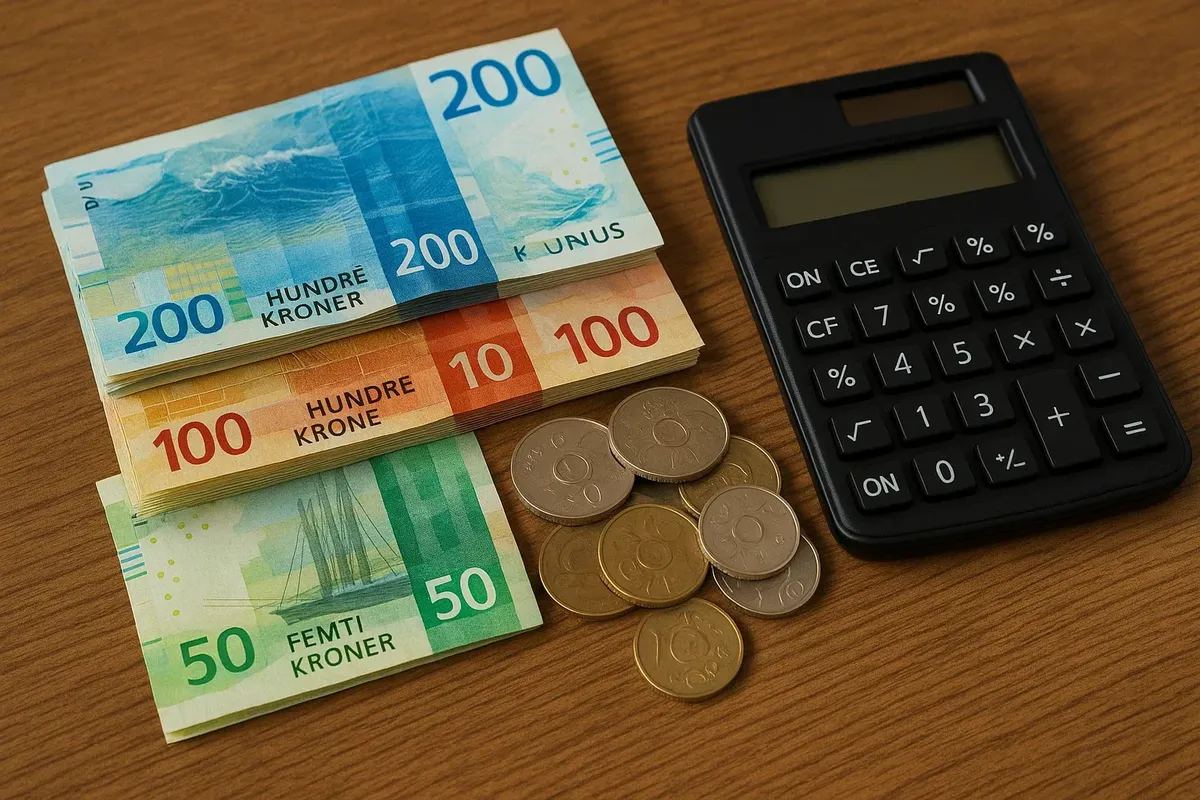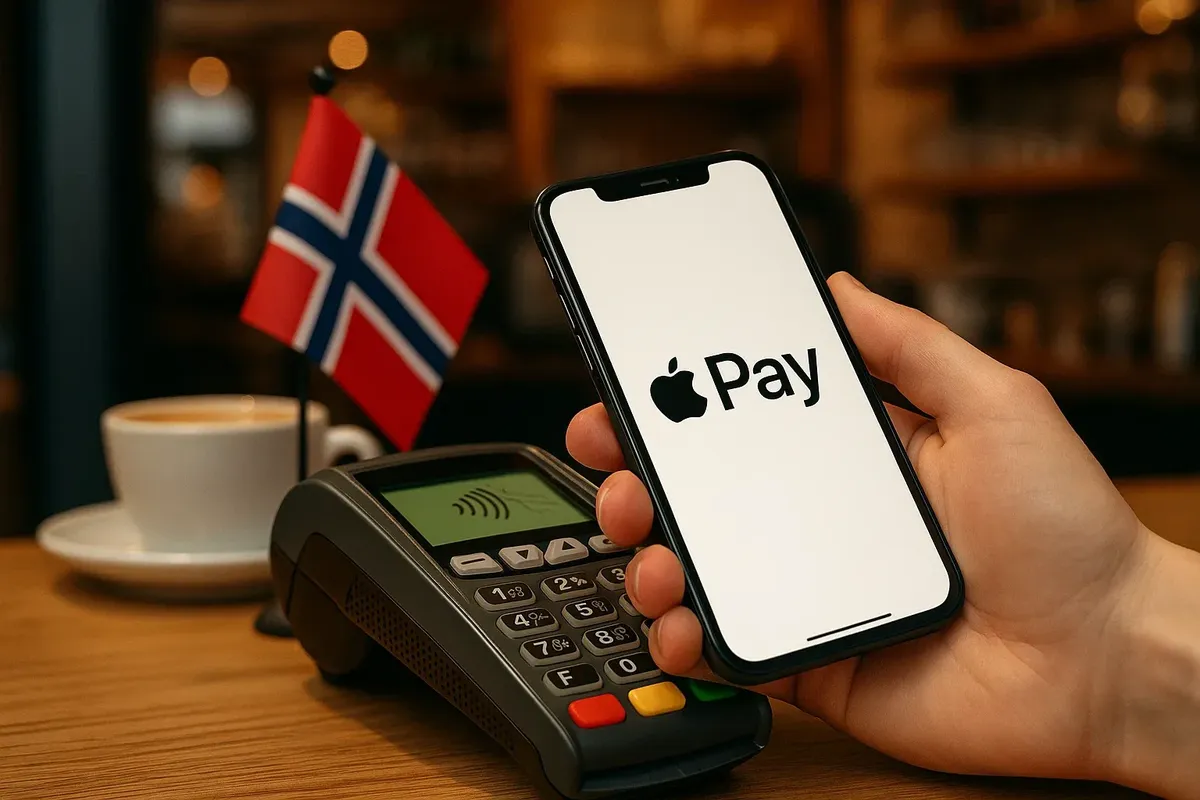💰 Norwegian money without stress: exchange rates, cards and cash in 2025
I know Norway sounds like a bit of a financial headache, but don't worry! The financial logistics here are totally transparent. Cashless transactions are really common, you know exactly how much commissions will be, and the krone exchange rate is published regularly by the ECB. Once you understand how it works, you won't have to pay any unnecessary fees and you'll have just the right amount of cash to spend. We've put together a list of the 10 most common questions we receive about money in Norway, and we've answered them for you here.
💶 What is the euro to Norwegian krone exchange rate in summer 2025?
According to Exchange-Rates.org and the official ECB table, in July 2025, the average exchange rate will remain at €1 ≈ 11.86 NOK, fluctuating between 11.79 and 11.95 NOK. When you're working out your budget, just multiply the euro by 12. That'll give you a little bit of a safety net for when the exchange rates go up and down. The krone tends to be a bit weaker against the euro at the end of summer, which is when the oil companies pay their dividends. So, if you book your services in advance, you can save 2-3% off the cost by the time you travel.

🏧 What commission do ATMs charge for withdrawals with a foreign card?
Most minibanks don't charge their own surcharge, but private ATMs in tourist areas do charge up to 10-75 NOK. But don't worry, a friendly warning is displayed before the transaction is confirmed. Don't worry - you can still withdraw up to NOK 10,000! Hey, just so you know, your friendly neighbourhood bank might add a 1-2% FX fee, but it's totally worth it to withdraw a bigger sum in one go! Hey, here's a little life hack for you: when you're out and about, keep an eye out for ATMs that are part of big networks like DNB or Nordea. You'll often find that these ATMs outside airports don't charge any fees, which is super helpful!

💱 How much do banks charge for currency conversion when paying by card?
Don't worry - most banks in Norway have a 2% surcharge on transactions made in foreign currencies. You can find this on the price list of DNB and most other banks. Don't worry - foreign cards (EU/US) have a similar 'foreign transaction fee' of 1-3% if the tariff is not a travel tariff. So, if you're looking for a card that won't charge you extra, I'd really recommend checking out fintech cards (like Wise or Revolut) or 'travel credit cards' – they're a great option! I totally get it, we've all been there: don't fall for DCC (dynamic currency conversion at POS terminals). It's so easy to get caught up in the moment, but the exchange rate is almost always worse than the bank's.
💵 Do I need to carry cash if cards are accepted everywhere?
A report by Norges Bank says that cash accounts for only 2% of all payments, which is really interesting! But the regulator requires shops to accept cash, which is a bit confusing. When you're planning your trip, our friendly team at VisitNorway suggests bringing a little extra cash for the rural fairs and toilets. We totally get it, the golden mean for tourists is 500-1,000 NOK per week. This should be more than enough for emergencies, tips for your awesome guides and a couple of souvenirs outside POS terminals.
📱 Do Apple Pay and Google Pay work?
Absolutely! The lovely folks at VisitNorway have confirmed that mobile wallets are a go-to payment method 'almost everywhere' – how great is that? Ruter, Vy and even Narvesen kiosks are all set for NFC acquiring, so you can pay with ease and convenience no matter where you are. It's great to know that Apple Pay has been around since 2018, and even better that in 2024, Vipps MobilePay became the first alternative wallet on iPhone thanks to the EU DMA. Hey, go ahead and add your card and pay – our friendly BankAxept terminals can recognise the token just like a physical card.

🍽️ I hope you don't mind me asking, but are tips mandatory?
You might be surprised to learn that tips are not really expected in Norway. In fact, a study by Nordic Nomad found that salaries in Norway already include service charges. But in tourist restaurants, it's become pretty common to round up the bill by 5-10%. The payment system offers an 'Add Tip' option, but you don't have to do that if you don't want to. You know, those hard-working people like taxi drivers, bartenders and guides, they really appreciate it when you round up your bill to the nearest 10 NOK. But don't worry if you can't do it, they'll totally understand.
🎒 How much cash should I take for a week's trip?
If you're using a card and your phone, you should be all set with 500-1,000 NOK for any little emergencies that might pop up. Whether it's a quick stop for a loaf of bread in a village or a little treat like a box of strawberries from a local farmer, you'll be ready to go. If you're planning a fishing trip or a visit to a farmers' market, please remember to set aside an extra 300–400 NOK. In the city, you'll find that almost all terminals accept cards, so you can withdraw cash at any minibank.
🚋 I was just wondering, is there a hidden commission when paying for a ticket on Ruter with a foreign card?
And the best thing is, the carrier itself doesn't charge a commission! The Ruter App is super easy to use and accepts Visa, Mastercard and Apple Pay at face value. Don't worry - your bank won't charge you anything extra. They usually only apply a small fee of 1-3% for foreign currency transactions. To avoid this, it's a great idea to pay with a fintech card that doesn't have any commissions. Hey, just a friendly reminder to please activate your ticket before boarding. Otherwise, you might be fined NOK 1,370, which would be a shame.
🛑 What is the contactless payment limit without a PIN?
Since 2020, our friends in the Norwegian banking industry have kindly raised the threshold to NOK 500, so that transactions above this amount require a PIN or Face ID. Don't worry - you can spend up to NOK 700 in one day! After a few small payments, the terminal will ask you to insert your card and enter your PIN. And if you've got an Apple/Google Pay wallet, you can rest easy knowing that the NOK 500 limit doesn't apply here — your biometrics are there to save the day!
🏪 I was wondering if you could tell me whether a 1,000 NOK note would be accepted in a shop?
It's a rare denomination, but it's still perfectly legal tender. Hey, so I totally get where you're coming from, but I can assure you that supermarkets and bars in central Oslo are super friendly and will be happy to accept the note. I've seen lots of local residents on TripAdvisor saying the same, and they're always happy to give you change for 1,000 kr. So, no worries there! If you need to exchange your money, you're best off doing it at a bank or using a Rema 1000 cash register. Sometimes, the cashier might not have any change, but they'll do their best to help you out.
I totally get it, Norway's financial picture is actually pretty simple. The great thing is, the exchange rate is published in the clear, and the banks are totally upfront about their 2% conversion fee. You really only need to have cash on you, just in case. Why not get yourself a fintech card with no FX fees? Then you could activate Apple Pay, withdraw a hundred or two kroner for the markets, and you're all set to deal with any money issues you might have! This will give you more time and money to enjoy the best bits: like trying the delicious brunost, rowing on the fjord, and the 'wow' factor of the northern lights. I can't wait to see you among the fjords!





2 comments
Log in to leave a comment
Hvilken løsning vil dere anbefale for turister som vil minimere gebyrer ved valutaomregning — reisekort, debetkort, forhåndsbetalte kort eller noe annet?